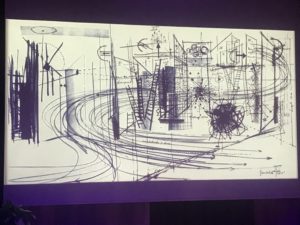RCR-arquitectes from Olot/Spain (winner of the Pritzker-prize 2017) realized a superb house for two owners of a Michelin-star restaurant in Barcelona, with the explicit request to create a sphere that would be as withdrawn and quiet as possible. The result is a corten-steel assembly of volumes half-buried in the landscape, without ever becoming irrelevant or disturbing.

